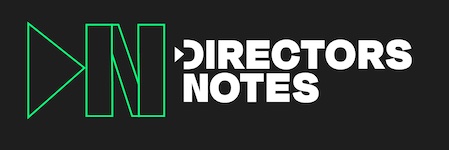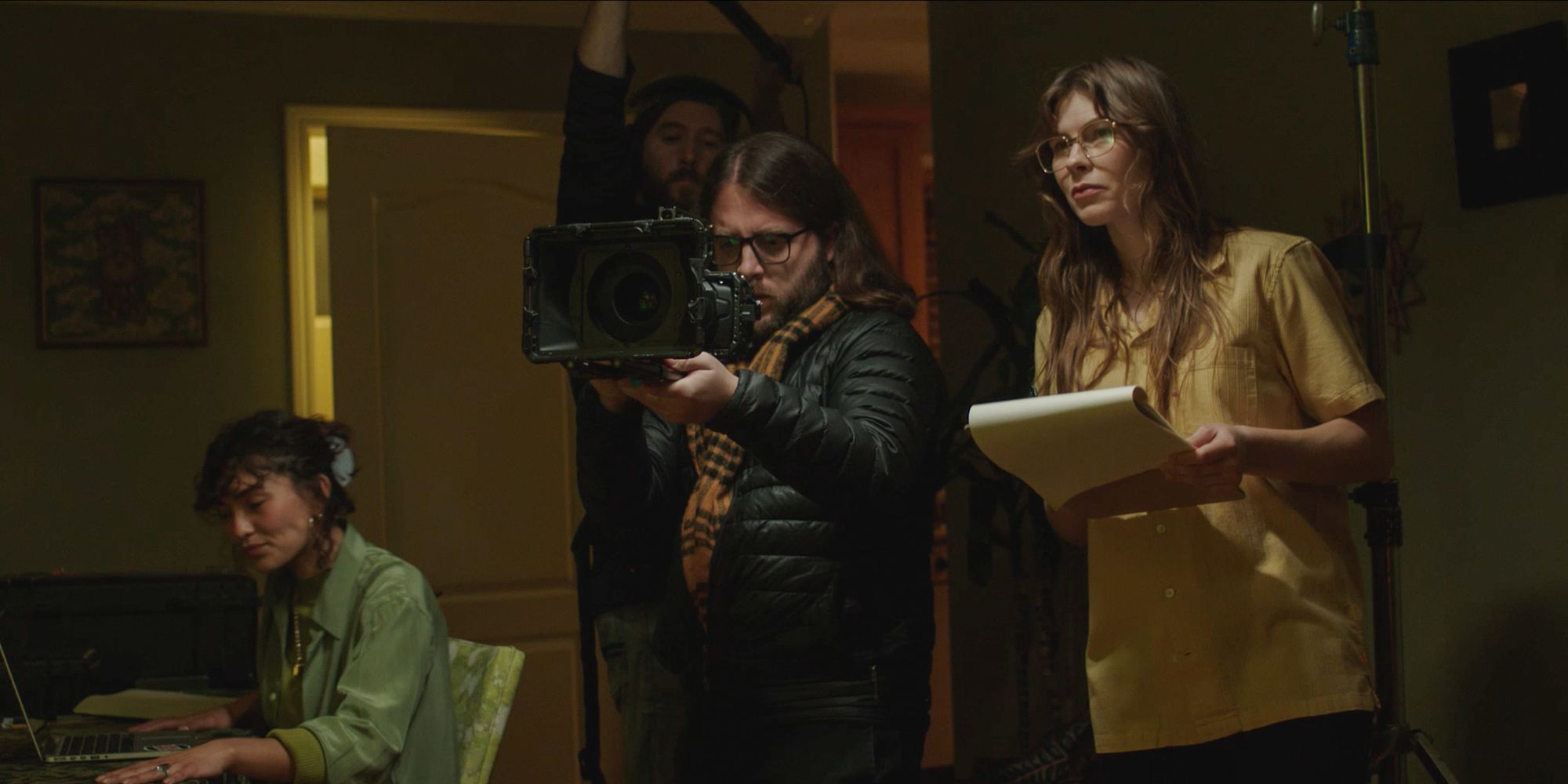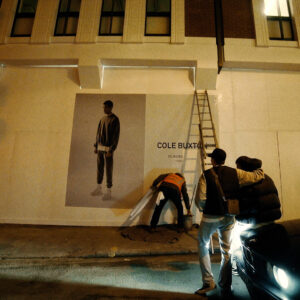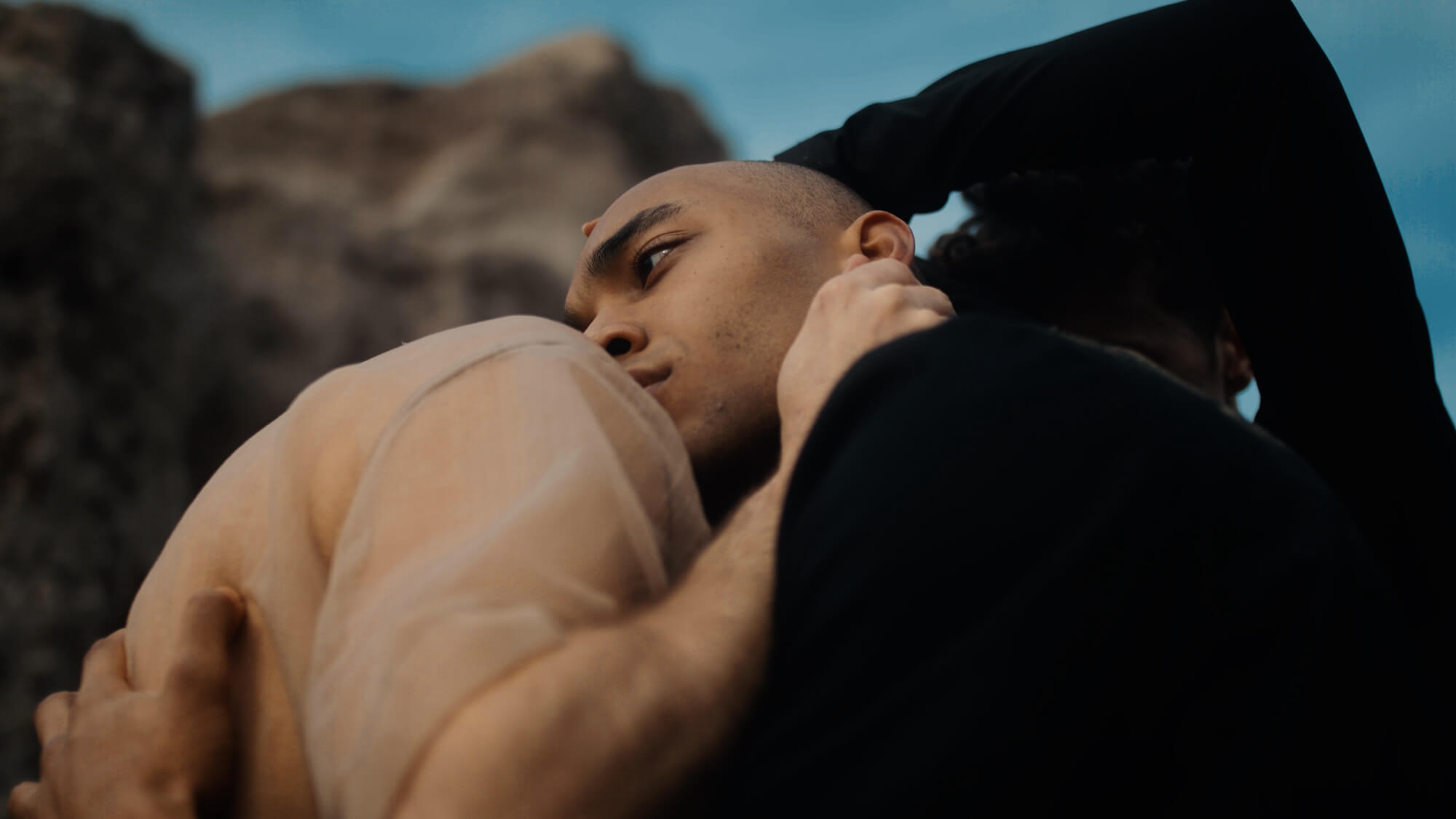
Here at DN, we’ve recently become infatuated with the wonderful films being produced by Film.Dance. They combine graceful choreography with ambitious camerawork and the results consistently raise the bar. Their latest work to grace our pages is Torben Loth’s Torn, a venture into masculinity through a combination of both primal and sensitive movements. The film’s cinematography captures the choreography with a sweeping motion amongst a vast, arid environment and it looks fantastic. Loth joined Directors Notes in conversation to discuss the link between environment and movement, and the process he utilised to achieve his impressively dynamic camerawork.
When Torn began being developed, were there main themes you looking to explore within the dance?
From the beginning the theme of the choreography was clear. An exploration of the expectations of manhood and the internal fight and dialogue with the self.
What allowed you to bring those themes into a filmic space?
For me an essential part of finding a way to visualise those themes was finding the right environment. Our Choreographer Waddah Sinada created this beautiful dance full of vulnerability, tenderness and roughness and I wanted to support this by finding the right location. The first decision I had to make was whether I wanted an urban or a natural environment. Hearing what the choreography was about it was quite clear to me that I wanted to shoot in a natural environment. To me it was important that the surroundings convey a rather primal force. Something untamed and raw but also soothing and tender. After a lot of scouting I found the perfect location with towering walls, claustrophobic canyons and wide open spaces. The location was supporting the story we wanted to tell.
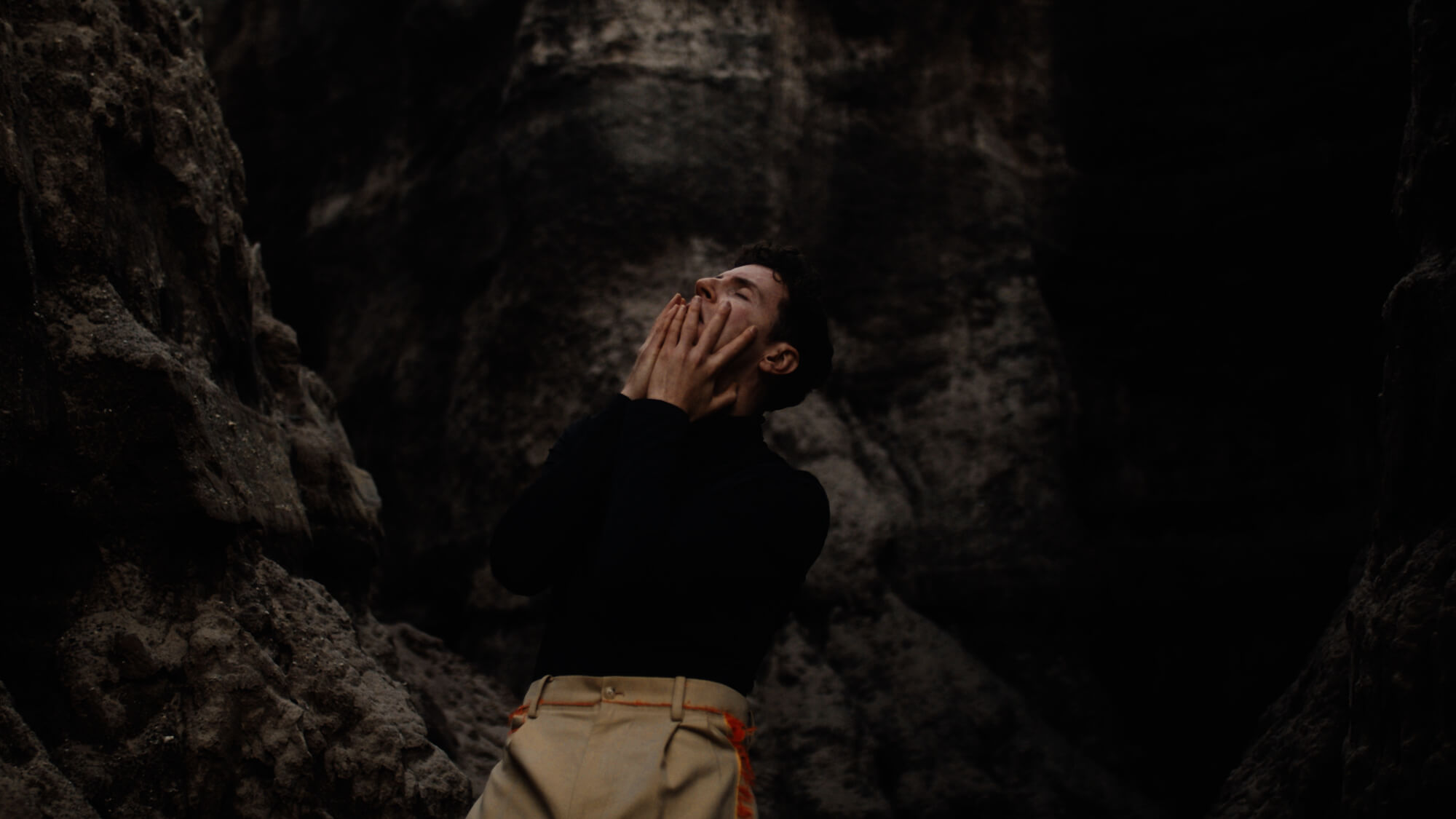
Considering how you made this over the last year, were you able to fit in much time for rehearsal with the dancers?
I could not rehearse together with the dancers so I watched the clips of the dancers’ rehearsals over and over again and made plans with the Cinematographer Lasse Liebelt on how to best capture the choreography.
To me it was important that the surroundings convey a rather primal force. Something untamed and raw but also soothing and tender.
How much say did you have in the dancers’ movements?
I had no intention to change parts of the choreography. That would have meant to change the script so to speak. Waddah was the author of the script and I saw it as my job to take that script and translate it to the screen. The dance was the dialogue and I already liked the dialogue. What I loved about this project is that everybody brought their unique set of skills and their area of expertise so I put full trust in everyone involved.
What were the specific elements of Waddah’s choreography that you were excited to capture?
Torn is a piece about an inner struggle or an inner fight which is an exhausting process and this is what I wanted to convey. So I decided to shoot the whole choreography chronologically since I wanted the dancers to feel a bit more tired for every minute that goes by and let the physically demanding choreography do the work. I told them to not try to act too much but rather let the facial expressions come naturally which worked beautifully.
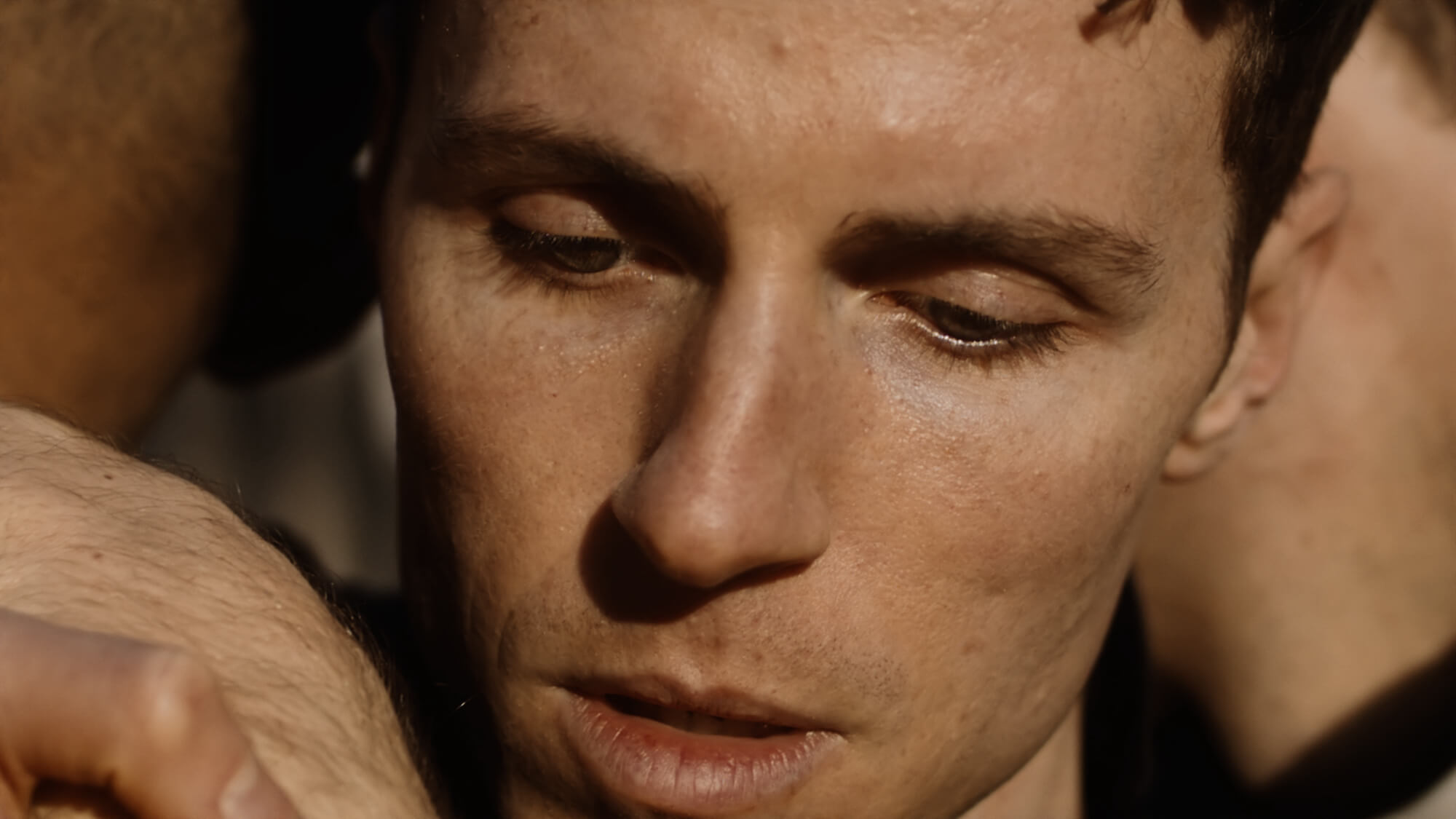
I really enjoyed how fluid the camera is, it almost feels like a fourth dancer. What did you shoot on and how did you approach filming?
We shot on the Blackmagic URSA Mini Pro 4.6K on a Steadicam and a tripod and with three Sigma PL Classic lenses. One 14mm for shots within the canyons, one 35mm for portraits and scenes that were supposed to have a less stylized look and one 105mm which we used for certain scenes to have the backdrop tower up even more. The camera functions as a dynamic spectator moving intuitively with the dancers. It was important to me to include some long takes which were typically filmed with the 35mm lens as wide shots that show the choreography raw and unfiltered. These shots we mixed with slow motion shots to give pause and let the viewer watch those intimate moments closely.
What drew you to tell the film over a three part structure?
The film is split into three parts to have an arc that carries the viewer through the film with a slow and almost menacing build-up, a dynamic mid section and an emotional payoff at the end. This is supported by the incredible score by Pete Fraser which gives each of the three acts an individual mood but also ties them together. Additionally, Peter Duffy’s amazing sound design added texture to the images. It also grounded the visuals and made them feel more tangible. For some scenes, I decided to not use sound design to have them feel less grounded or even sublime.
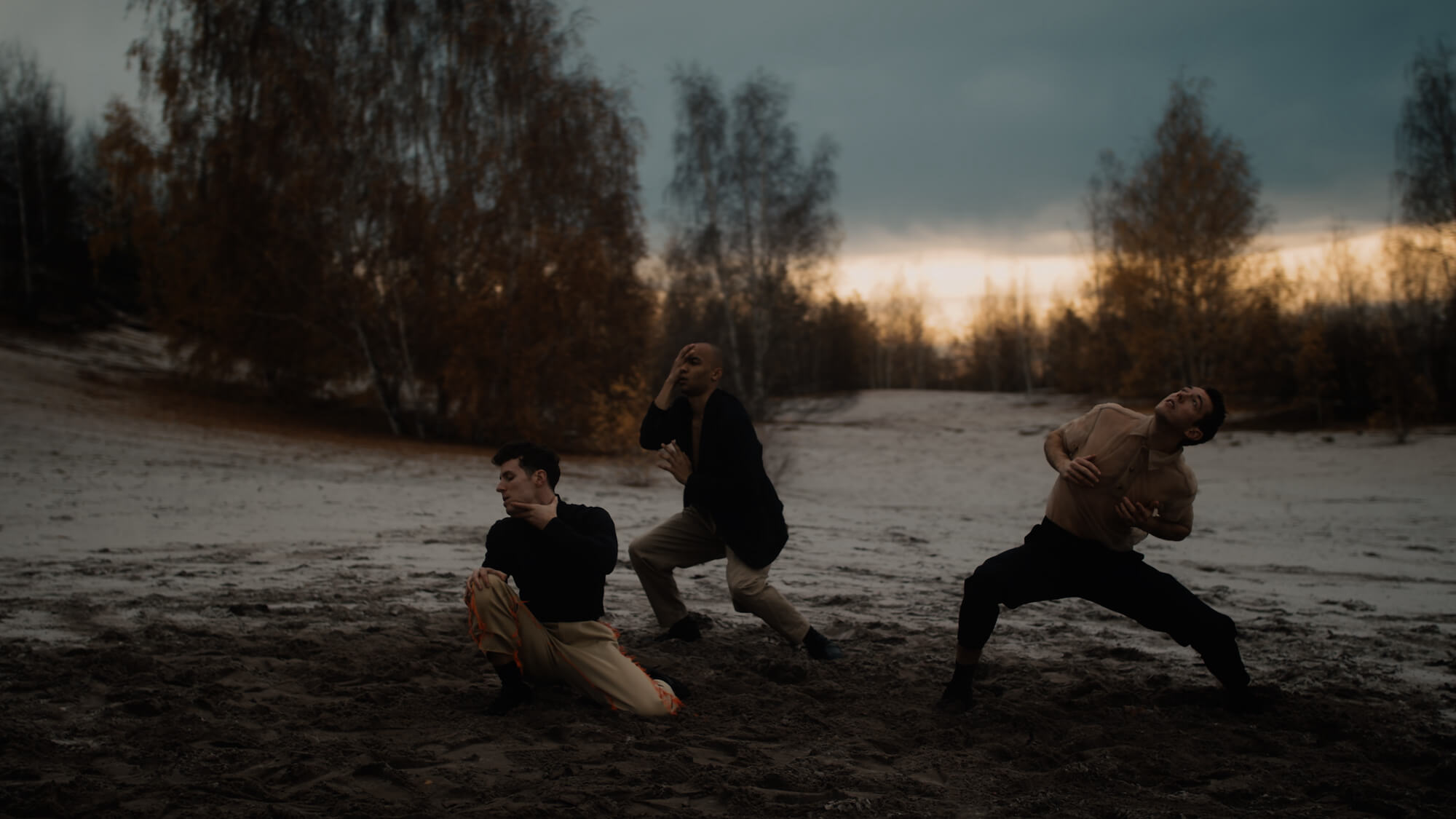
How many days of shooting did it take to achieve everything?
For logistic reasons we only had one day of shooting and since we shot in November this meant only six hours of daylight. So we had to be very efficient on set.
The camera functions as a dynamic spectator moving intuitively with the dancers.
What do you think you owe that efficiency to? Is it the dancers’ professionalism or a tight crew working smoothly, or both?
The dancers Robert Robinson, Conal Finn Francis-Martin and Jamal Uhlmann were incredibly professional and skilled and were not only able to flawlessly perform the choreography but to also convey the desired emotions with their facial expressions which made my job a lot easier. This whole project was a team effort though and I am super proud to have worked with amazing artists from around the world I would not have met if it had not been for Films.Dance!
What’s next for yourself?
At the moment I am working on a script for a short film that has been on my mind for a while now. I also hope that I can further develop my skills as a dance and sports film director and work with amazing artists and athletes from around the world.
Torn is one of the many great projects shared with the Directors Notes Programmers through our submissions process. If you’d like to join them submit your film.
